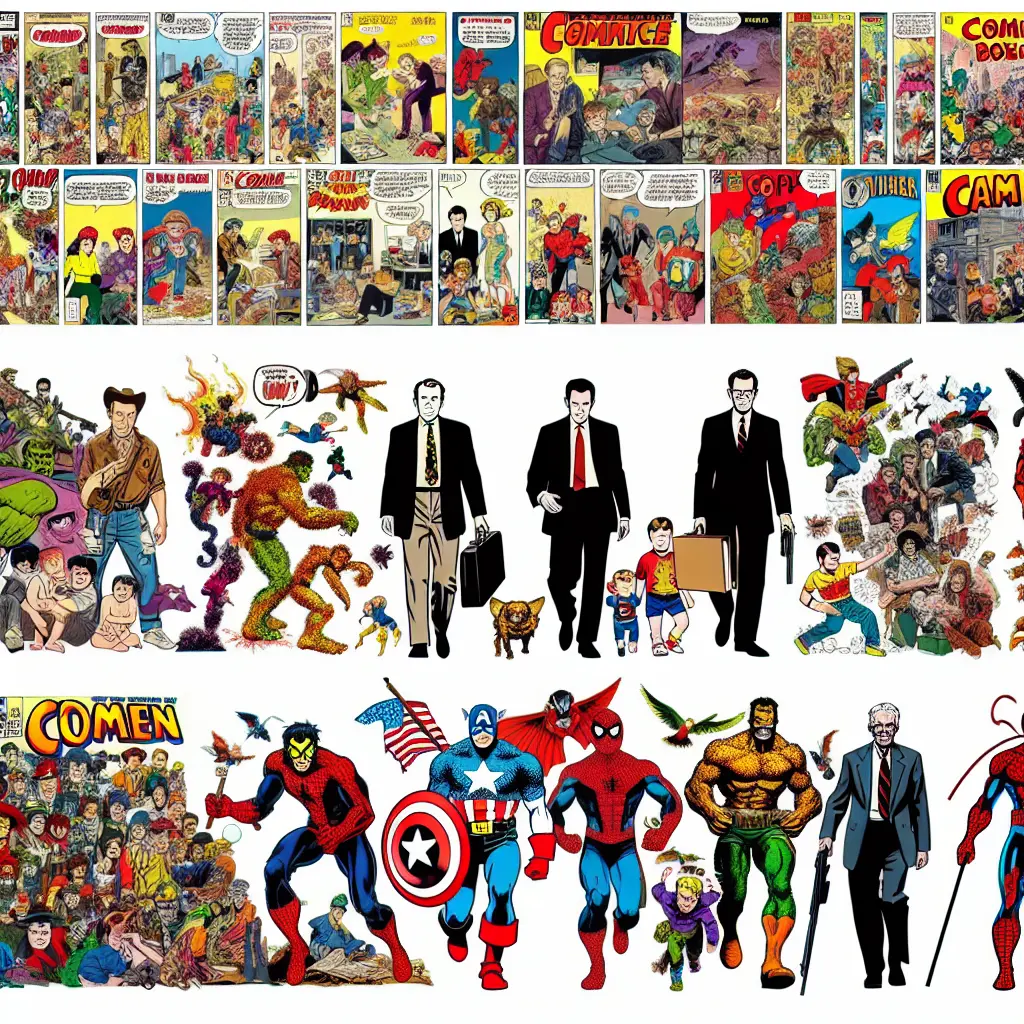
Marvel Comics, a name synonymous with superhero sagas and dynamic storytelling, has undergone a remarkable evolution since its inception in the late 1930s. The journey from print comics to the silver screen has seen shifts in narrative techniques, character development, and even the integration of cutting-edge technology, reshaping how stories are told and consumed. This blog post will delve into the Marvel storytelling evolution, exploring how changes in society, technology, and audience expectations have influenced the narratives of one of the world's most beloved franchises.
The Roots and Growth of Marvel Comics History
Marvel's journey began in 1939 as Timely Publications, and through the decades, it morphed into the powerhouse known as Marvel Comics. The early days were marked by characters like Captain America who emerged as patriotic symbols during wartime. As we transitioned into the 1960s, Marvel introduced more complex characters and socially relevant stories, reflecting the changing American landscape. This era saw the birth of iconic characters such as Spider-Man, the X-Men, and the Fantastic Four, who were not just heroes but also relatable characters with personal challenges and flaws.
Technological Innovations and Their Impact
The impact of technology on Marvel has been profound. From the simple ink and paper of the 20th century to the advanced CGI of the 21st century, technology has expanded the boundaries of Marvel's narrative techniques. The advent of digital comics has made Marvel’s stories accessible worldwide, breaking geographical and physical limitations that once confined them to print.
Marvel Cinematic Universe (MCU) – A New Era of Storytelling
The launch of the MCU in 2008 with "Iron Man" marked a significant milestone in Marvel franchise transformations. It wasn't just about adapting comic stories into movies; it was about creating a shared universe where multiple storylines and characters intersect. The MCU revolutionized Hollywood, showing that continuous character development across multiple movies could keep audiences engaged and create a globally interconnected experience.
Character Development and Diversity
One of the strengths of Marvel has been its character development. Characters grow, evolve, and sometimes even die, making their journeys feel real and relatable. Recent years have seen an increased focus on diversity in Marvel Comics, with characters like Kamala Khan (Ms. Marvel) and Miles Morales (Spider-Man) reflecting broader cultural and racial backgrounds, thus resonating with a global audience.
Superhero Narrative Changes and Comic Book Storytelling Trends
The superhero narrative changes over the years reflect broader comic book storytelling trends. The early black-and-white morality tales have shifted towards complex narratives exploring themes like identity, responsibility, and morality in a nuanced manner. This shift is evident in story arcs like "Civil War," where heroes find themselves at odds over ideological differences, challenging the notion of right and wrong.
Marvel's Cross-Media Storytelling and Audience Influence
Marvel's cross-media storytelling is evident as their narratives extend beyond comics into films, TV series, video games, and more. This expansion has allowed Marvel to reach different audiences, adapting its content based on medium while maintaining a cohesive storyline across platforms.
The influence of audience feedback has become increasingly apparent in shaping Marvel stories. The rise of social media has enabled fans to voice their opinions directly to creators, influencing storylines and character development. This interaction ensures that Marvel stays relevant by adapting its narratives to meet contemporary expectations.
Recent Developments and Future Directions
Kevin Feige has been pivotal in shaping the MCU’s direction. At Comic-Con 2024, Feige shared his origin story in Marvel and teased upcoming projects like Spider-Man 4 and a new X-Men team integration into the MCU (source: Comic-Con panel discussion). These revelations highlight how Marvel is continuously expanding its universe, introducing new characters while further developing existing ones.
In terms of storytelling innovation, "Deadpool & Wolverine" represents a new peak in cinematic self-awareness, a trend that's becoming popular in superhero narratives. The film not only acknowledges its own existence within a larger universe but also plays with audience expectations and cinematic norms (source: Film Reviews).
Marvel's Thematic Shifts and Legacy
Over the decades, Marvel's thematic shifts have mirrored societal changes. Issues like civil rights, drug abuse, and now, mental health and inclusivity are being woven into its stories, making them not just entertaining but also reflective of contemporary issues.
The legacy of Marvel Comics is not just its vast array of characters or impressive world-building; it’s the impact it has on its audiences – inspiring creativity and offering a mirror to society through fantastical tales.
As we look forward to new releases and developments within Marvel Studios, it’s clear that Marvel continues to adapt and evolve with the times. Whether through technological enhancements or through storytelling prowess, Marvel keeps setting new benchmarks for what can be achieved in modern storytelling.
In conclusion, as we continue to witness Marvel storytelling evolution, it is clear that the heart of Marvel’s success lies in its ability to adapt – whether to technology, changing societal norms, or shifting audience expectations. This constant evolution keeps stories fresh and relevant, ensuring that Marvel remains at the forefront of not just comic book entertainment but global pop culture.
Thank you for joining me on this exploration of Marvel’s storied past and dynamic present. Here’s to more decades of innovative storytelling from our favorite heroes!
— Arthur Barnes